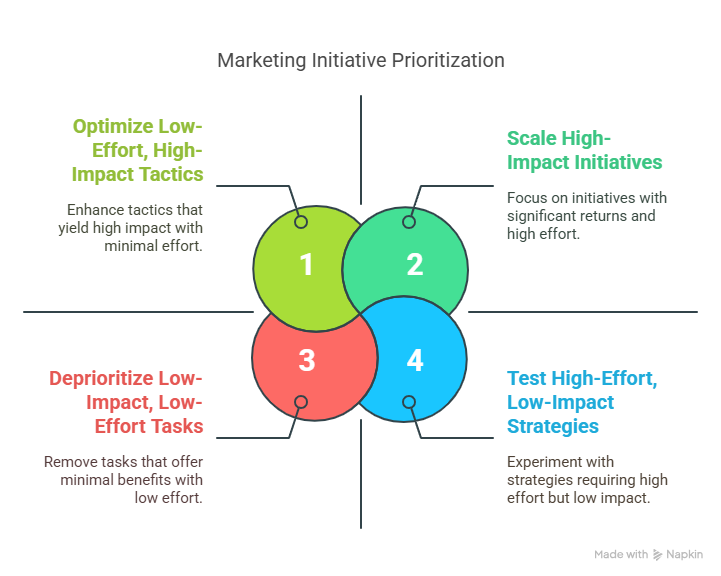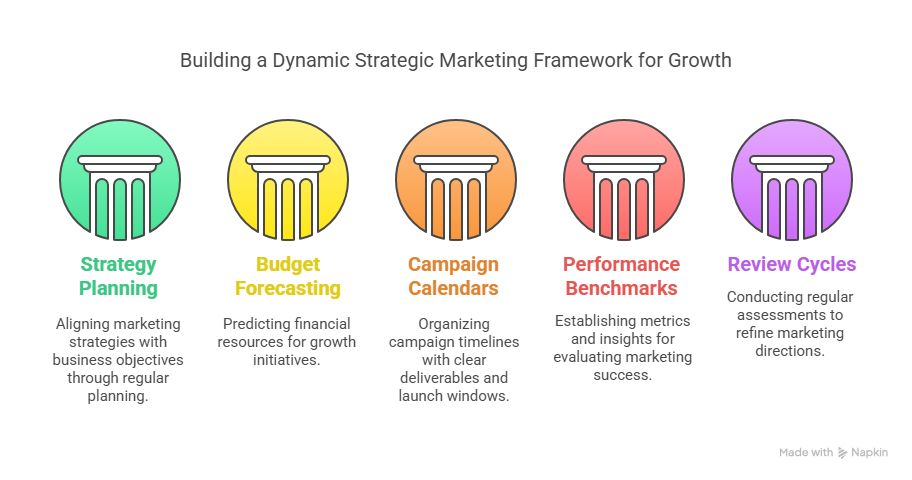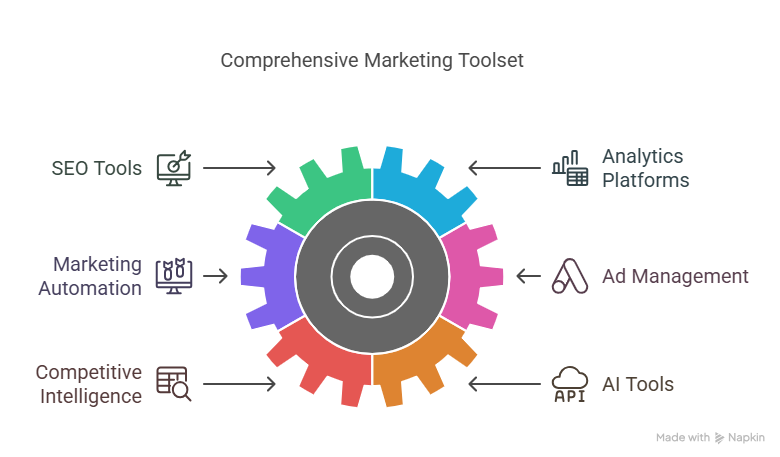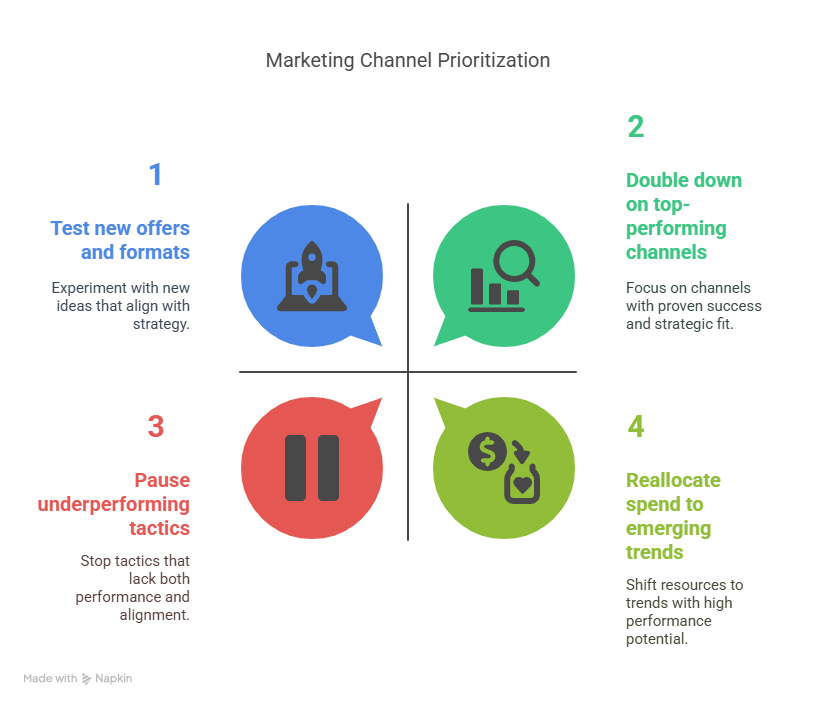Marketing is Never 'Set and Forget'
Introduction: Why Marketing Can’t Be Static in High-Tech Industries
In the world of photonics, quantum computing, semiconductors, and other advanced technologies, standing still is not an option. The landscape evolves daily—new competitors enter the market, customer behaviors shift, algorithms change, and emerging trends reshape entire industries overnight. Without continuous optimization, your marketing strategy risks becoming obsolete as it fails to adapt to these changes.
Successful marketing isn’t a “set it and forget it” exercise—it’s a dynamic, continuous process of testing, learning, refining, and scaling. Companies that build marketing systems with adaptability at their core will outperform those that treat marketing like a one-time project.
- Shifts in buyer preferences: B2B buyers increasingly expect self-serve research tools, transparent pricing, and thought leadership content before they ever talk to sales.
- New channels emerging: The rise of AI-powered search, evolving social platforms like LinkedIn and TikTok, and the demand for snackable, short-form video content means brands must diversify where and how they show up
- Algorithm updates: SEO and paid media algorithms change constantly, impacting visibility, reach, and engagement strategies. Staying current on these shifts is crucial to maintaining performance.
- Competitor innovation: New players enter the market all the time, bringing fresh messaging, disruptive offers, or new technologies. Your marketing must evolve to differentiate, clarify value, and stay top-of-mind.
Ignoring these shifts isn’t just a missed opportunity—it creates vulnerability. Static marketing quickly leads to declining performance, wasted budget, and lost relevance in a fast-moving marketplace.

Why Marketing Must Evolve with Trends and Customer Behavior
Customers are more informed, discerning, and digitally empowered than ever before. Their expectations evolve rapidly, and so should your marketing. The brands that win in today’s environment are the ones that stay curious, agile, and committed to meeting their audience where they are now—not where they were six months ago.
Several factors drive this need for evolution:
The Importance of Ongoing Strategy Refinement & Performance Tracking for Continuous Optimization
Marketing excellence isn’t just about big ideas — it’s about disciplined execution over time. Continuous improvement means viewing every marketing initiative as a test bed for learning, iterating, and sharpening your strategy. But beyond just improving results in the short-term, it’s equally important to create systems that can sustain those improvements long-term.
Marketing teams that thrive over time focus on both adaptability and durability. They build habits, rituals, and structures that ensure lessons learned become standard practice — not forgotten experiments. Performance tracking isn’t about vanity metrics; it’s about building marketing intelligence that compounds over time.
Key Activities:

- Regular performance reviews of campaigns, channels, and content
- Monitoring KPIs like traffic quality, conversion rates, CAC, and LTV
- A/B testing ad creatives, landing pages, emails, and CTAs
- Gathering audience insights through surveys, engagement analytics, and CRM data
Continuous improvement ensures your marketing stays relevant, effective, and aligned with business goals. But improvement alone isn’t enough—it also needs to be sustainable. Sustained marketing success comes from building repeatable systems, documenting learnings, and operationalizing what works best. Without this layer of sustainment, gains can easily erode over time as team turnover, market shifts, or new campaigns reset progress. Building marketing processes that can withstand change means investing in knowledge management, playbooks, scalable content assets, and performance tracking frameworks that future-proof your efforts.
Tiered Support vs. À La Carte Services: Right-Sized Marketing Help
Every company has different marketing needs at different growth stages. Some may benefit from ongoing strategic oversight; others need specific project execution.
Flexible Engagement Models:
- Tiered Support Retainers: Monthly or quarterly packages for strategic guidance, performance tracking, content updates, and campaign management.
- À La Carte Services: Project-based work like SEO audits, website refreshes, ad management, or sales enablement content.
This flexible approach allows companies to scale marketing support alongside business growth—without overcommitting to resources they may not need yet.
Long-Term Roadmapping: Aligning Marketing with Business Growth

Marketing should always be working in service of larger business goals—not just generating leads, but helping the company enter new markets, expand product adoption, and increase customer loyalty. A marketing roadmap connects the day-to-day execution of tactics to the broader vision of business growth.
Roadmapping isn’t just a planning activity—it’s an ongoing process of refinement, validation, and adaptation. It begins with strategic discovery: understanding the business’s growth objectives, resource constraints, and customer lifecycle. From there, it evolves into a living document that guides priorities, budgets, and measurement.
A well-built roadmap aligns stakeholders, identifies opportunity windows, and provides a framework for assessing what’s working and what needs to evolve. As campaigns launch and data accumulates, the roadmap becomes the central place to synthesize learnings and chart next steps.
Performance marketing matrices are often used during roadmap planning and refinement to plot activities by strategic importance and return on investment. These visual frameworks help marketing teams and executives:
What a Marketing Roadmap for Continuous Optimization Includes:
- Quarterly or annual strategy planning grounded in business objectives
- Budget forecasting tied to specific growth initiatives
- Campaign calendars with visibility into deliverables, dependencies, and launch windows
- Performance benchmarks, attribution insights, and cadence-based reporting
- Regular review cycles to revisit goals, assess risks, and refine direction
A roadmap isn’t just about structure—it’s about building alignment, foresight, and adaptability. It’s about continuous optimization, continuous growth. It ensures that every marketing dollar and hour invested is contributing to long-term growth.

Continuous Optimization Tools & Tactics to Stay Ahead of Competitors
High-tech industries move fast—but smart marketing operations stay ahead by leveraging modern tools, automation, and AI to create efficiency and scale impact.
Technology today is a powerful force multiplier. For small and mid-sized businesses, the right tools and strategy can create marketing capabilities that rival much larger teams — without needing the same headcount or budget. Modern marketing technology enables teams to automate repetitive tasks, personalize customer engagement, uncover actionable insights from data, and execute campaigns across multiple channels more effectively.
Choosing the right mix of tools — sized appropriately for your business needs — is key. Technology should create clarity, not complexity. Tools that are underutilized or poorly integrated create wasted spend and frustration, but tools that fit your process become essential drivers of growth.
AI tools in particular are reshaping marketing execution. From content generation to predictive analytics to dynamic ad optimization, these technologies help businesses punch above their weight, operating faster and smarter than ever before.
Continuous optimization, regular audits, and tech-enabled insights aren’t just competitive advantages—they’re requirements for marketing teams that want to stay efficient, agile, and ahead of market changes.
Recommended Tools:
- SEO Tools: SEMrush, Ahrefs, Surfer SEO
- Analytics Platforms: Google Analytics 4, Looker Studio, Power BI
- Marketing Automation: HubSpot, ActiveCampaign, Marketo
- Ad Management: Google Ads, LinkedIn Campaign Manager
- Competitive Intelligence: SparkToro, Similarweb, Crayon
- AI Tools: Copy.ai, ChatGPT for content generation; AdCreative.ai for AI-powered ad creative

Measuring & Adjusting Marketing Investments for Maximum ROI and Continuous Optimization
Marketing budgets should never be static. They should flex with performance, market shifts, and opportunity windows. Smart marketing teams use data-backed frameworks to decide where to allocate resources for maximum impact—and when to shift them elsewhere.
A key part of this is understanding marketing attribution models, which help clarify how different touchpoints contribute to conversions. Multi-touch attribution, time decay models, or position-based models can all provide richer insights into which channels influence buyer behavior most effectively.
Beyond attribution, many teams use simple but powerful matrixes to guide marketing investment decisions. These visual tools plot marketing tactics or channels along axes like performance (ROI) and strategic value, helping clarify:
- Where to invest more heavily
- What to maintain or continue testing
- Which areas need strategic pivots
- What to deprioritize or sunset

Best Practices:
- Double down on top-performing channels backed by clear attribution insights
- Pause or pivot underperforming tactics identified through data and audience feedback
- Reallocate spend toward emerging trends or evolving customer behaviors
- Test new offers, formats, and platforms in controlled pilots with clear success metrics
- Use matrix-based visual planning to evaluate channels and guide marketing priorities
Agile marketing operations allow you to invest smarter—not just spend more. The goal is always continuous optimization—powered by data, visualized clearly, and aligned to growth.
Conclusion: Marketing That Grows With You
Great marketing doesn’t stand still. It evolves, adapts, and improves over time. In high-tech industries, where change is constant, continuous optimization isn’t optional—it’s a competitive advantage.



